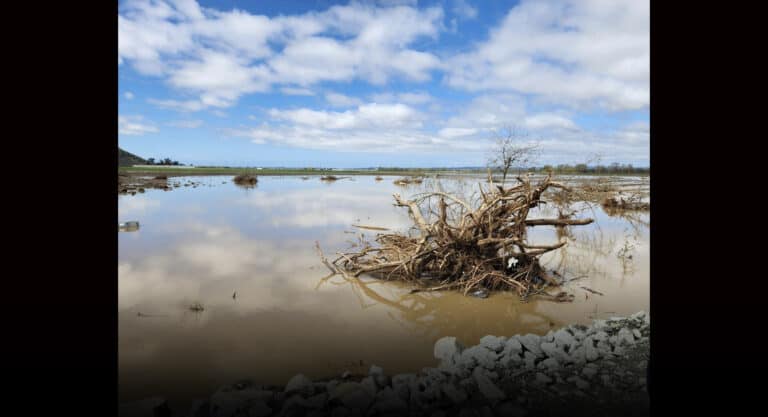Why levees don’t work, and the challenge of designing them differently
There has been a lot of discussion about why the Pájaro River levee failed, and who’s to blame for the breach that has decimated the Pájaro community. Likely there will be discussion about this for many moons to come. But consider that the ultimate fault may lie with the levee system itself, which has shown over and over to be doomed to failure.
Levees across the United States have been repeatedly broken, breached and overtopped in the past century due to storm action, despite the best efforts of the U.S. Army Corps of Engineers and many other entities. Levee breaks have flooded many communities, often low-income neighborhoods occupied by people of color. Most notably this happened during Hurricane Katrina in New Orleans in 2005, when more than 50 levees and flood walls failed, inundating more than 100,000 homes and businesses and causing months, if not years, of misery for affected residents.
Just after floodwaters hit Pájaro March 10–11, I happened to be reading the book “Water Always Wins: Thriving in an Age of Drought and Deluge,” in which author Erica Gies discusses levees at length. “There are two kinds of levees — those that have failed, and those that are going to fail,” she writes of a rueful joke in the water management community.
When the water does break through, the resulting flood is more forceful and spills out much more water than a natural river might.
Gies points out that Katrina was horrendous, but certainly not the only levee catastrophe in recent history. In 2019, dozens of levees broke on the Mississippi, Missouri and Arkansas rivers following extreme rain and snow events, causing $20 billion in damage and delaying crop planting on millions of acres of farmland.
It’s a simple matter of physics. Levees are basically walls built next to rivers, with the intent of preventing floods. Yes, they stop some flooding, but because the water is contained in a channel, floodwaters run faster and stronger than they would in a natural waterway. When the water does break through, the resulting flood is more forceful and spills out much more water than a natural river might.
Humankind has been building levees since the dawn of civilization, but the system that historically has been used by the U.S. Army Corps of Engineers is a “levees only” engineering strategy. This was adopted in the 19th century when Americans felt it was their right to bend nature to their will. But as we have found out, water is a force that will ultimately prevail despite our puny efforts.
“In many ways, the story of the levee’s design and failure is a parable about the eternal […]
Full article: The power of water

